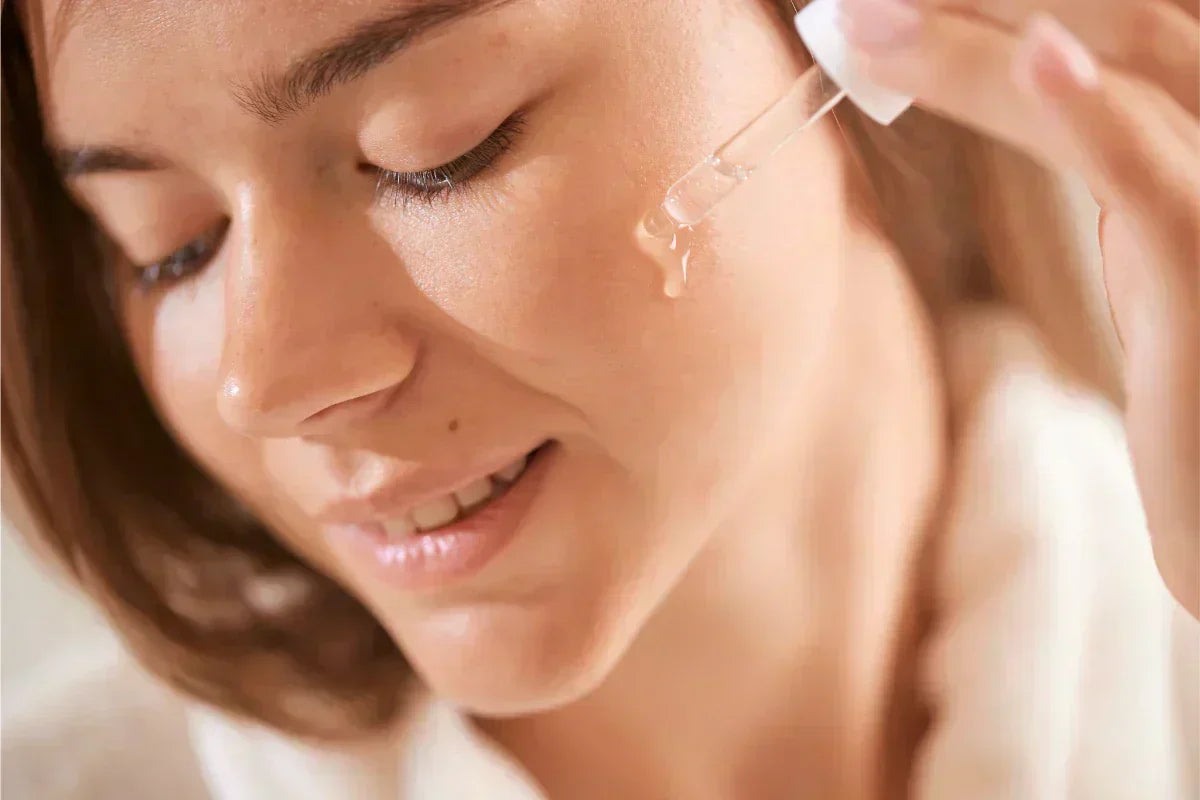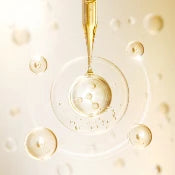Finding the perfect sunscreen for oily skin can feel like an impossible mission. Traditional formulas leave your skin greasy, clog pores, and turn your face into an oil slick by midday. But what if there were a solution that could provide broad-spectrum protection while actually controlling excess oil production throughout the day?
Enter niacinamide sunscreen for oily skin, a game-changing combination that addresses both sun protection and oil control in one powerful formula. This innovative approach to sun care has revolutionized how people with oily, acne-prone skin can protect themselves from harmful UV rays without sacrificing a matte finish or triggering breakouts.
In this comprehensive guide, we’ll explore why niacinamide sunscreen represents the perfect solution for oily skin types, diving deep into the science behind this powerhouse ingredient and helping you choose the best sunscreen formulation for your specific needs. The key benefits of niacinamide sunscreen for oily skin include oil control, broad-spectrum protection, quick absorption, a matte finish, skin brightening, and suitability for oily and acne-prone skin.
Introduction to Niacinamide Sunscreen
Niacinamide sunscreen is a breakthrough in modern skincare, offering more than just basic sun protection. By combining the powerful benefits of niacinamide (Vitamin B3) with advanced sunscreen technology, these products provide a comprehensive solution for anyone seeking to protect and enhance their skin. Niacinamide is renowned for its ability to even out skin tone, reduce inflammation, and strengthen the skin barrier, making it especially valuable for those with oily skin, acne-prone skin, or sensitive skin.
What sets niacinamide sunscreen apart is its ability to address multiple skin concerns at once. Not only does it shield your skin from harmful UV rays and blue light, but it also helps regulate oil production, minimize the appearance of pores, and soothe irritated skin. This means you get effective sun protection while also supporting healthier, clearer skin. For anyone struggling with excess oil, breakouts, or redness, niacinamide sunscreen is a smart choice that works with your skin, not against it.
Why Niacinamide Sunscreen is Perfect for Oily Skin
Niacinamide, also known as nicotinamide, is a water-soluble form of vitamin B3 that has become a cornerstone ingredient for those struggling with excess sebum production. Unlike harsh astringent ingredients that can trigger a rebound effect and actually increase oil production, niacinamide works intelligently to regulate your skin’s natural sebum production. Niacinamide sunscreen is specifically formulated for the oily skin type, but its gentle and versatile nature makes it beneficial for other skin types as well.

Sebum Regulation Without Over-Drying
The primary reason niacinamide sunscreen works so well for oily skin lies in its proven ability to balance oil production at the cellular level. Research shows that niacinamide influences sebaceous gland activity, helping your skin produce only what it needs for healthy function rather than the excess oil that leads to that unwanted skin's greasy appearance.
This regulation occurs gradually over time, meaning you won’t experience the harsh drying effects that can actually worsen oily skin conditions. Instead, your skin barrier remains intact while oil production normalizes, creating the ideal foundation for sun protection that doesn’t feel heavy or suffocating.
Anti-Inflammatory Properties for Acne-Prone Skin
For those dealing with combination skin types or specifically oily, acne-prone skin, the anti-inflammatory benefits of niacinamide cannot be overstated. This powerful ingredient helps calm redness and irritation often present alongside acne, while its ability to prevent clogged pores makes it an ideal companion to sun protection.
When formulated in sunscreen, niacinamide creates a protective barrier that shields skin from both harmful UVA and UVB rays while simultaneously addressing the underlying inflammation that can worsen acne conditions. This dual-action approach means you’re not just protecting your skin from sun damage, you’re actively improving your skin texture and tone.
Lightweight, Matte Finish Technology
Modern niacinamide sunscreen formulations leverage advanced cosmetic chemistry to deliver what many thought impossible: comprehensive sun protection with a non-greasy formula. These innovative textures absorb quickly into the skin, leaving behind a matte finish that serves as the perfect base for makeup or simply shine-free skin throughout the day. These sunscreens are non-sticky, making them comfortable for daily use without any greasy or tacky residue.
The lightweight texture of these formulations allows you to apply the proper amount of sunscreen, approximately 1/4 teaspoon for the face and neck, without feeling like you’re wearing a heavy mask. Some formulations include tapioca starch to help absorb excess oil and maintain a matte, non-sticky finish. This is particularly important for oily skin types who often skimp on sunscreen application due to texture concerns.
Top Benefits of Niacinamide in Sunscreen Formulations
Optimal 5% Concentration for Maximum Effectiveness
Clinical studies have established that a 5% niacinamide concentration provides the optimal balance between effectiveness and tolerability for most skin types. This concentration level has been demonstrated to effectively reduce excess oil production without causing skin irritation, making it the gold standard for niacinamide oil control formulations.
When this concentration is incorporated into sunscreen SPF 50 formulations, users experience consistent oil control that lasts throughout sun exposure periods. Unlike products that lose effectiveness as you sweat or produce natural oils, the 5% niacinamide concentration maintains its regulatory effects even during extended outdoor activities.
Skin Tone Brightening and Dark Spot Reduction
Beyond oil control, niacinamide offers significant benefits for improving overall skin tone and addressing hyperpigmentation concerns common in oily skin types. The ingredient works by inhibiting melanosome transfer from melanocytes to keratinocytes, effectively reducing the formation of dark spots and promoting a more even complexion. Some formulations also include alpha arbutin to further enhance skin brightening and reduce the appearance of dark spots.
For those dealing with post-acne marks or uneven skin tone from previous breakouts, consistent use of niacinamide sunscreen can gradually improve skin clarity while preventing new sun damage that could worsen existing pigmentation issues. This makes it particularly valuable for sensitive skin that’s prone to both acne and hyperpigmentation.
Enhanced Skin Barrier Function
One of the most significant long-term benefits of niacinamide in sunscreen formulations is its ability to strengthen the skin barrier. By boosting ceramide production and supporting the formation of other structural lipids, niacinamide helps create more resilient skin that can better withstand environmental stressors.
This improved barrier function is particularly important for oily skin, which often experiences compromised barrier integrity due to over-cleansing or harsh acne treatments. A stronger skin barrier means better skin hydration retention, reduced sensitivity, and improved overall skin health that’s visible in both texture and appearance.
Protection Against Blue Light Damage
Modern niacinamide sunscreen formulations often provide protection beyond traditional UV rays, including defense against blue light exposure from digital devices. While blue light exposure doesn’t cause immediate burning like UVB rays, it can contribute to premature ageing and skin damage over time.

The antioxidant properties of niacinamide help neutralize free radicals generated by both sun exposure and blue light, providing comprehensive protection for our increasingly digital lifestyles. This makes niacinamide sunscreen particularly relevant for individuals who spend a significant amount of time indoors but still require protection from multiple sources of light.
Types of Sunscreen for Oily Skin
Choosing the right sunscreen for oily skin can make all the difference in your daily routine. The best sunscreens for oily skin are those that provide broad-spectrum protection without clogging pores or making your skin feel greasy. Gel sunscreens are a top pick for oily skin types because they have a lightweight, water-based texture that absorbs quickly and leaves no residue. These formulas often include oil-regulating ingredients like niacinamide and zinc oxide, which help control oil production and prevent breakouts.
Lightweight lotions and oil-free sprays are also excellent options, as they deliver effective sun protection without adding extra shine. When shopping for sunscreen, look for labels that say “non-comedogenic” or “oil-free” to ensure the product won’t clog pores. Ingredients like hyaluronic acid provide hydration without heaviness, while zinc oxide offers gentle, broad spectrum protection. By selecting the correct type of sunscreen, you can keep your skin protected, balanced, and shine-free throughout the day.
Best Niacinamide Sunscreen Products for Oily Skin
Oil-Free Gel Formulations
The most effective niacinamide sunscreen options for oily skin typically come in gel sunscreen formats that provide SPF 50 PA++++ protection. These formulations combine the oil-controlling benefits of niacinamide with advanced UV filter technology that doesn’t compromise on protection levels.
Look for products that specifically mention “oil-free” and “non-comedogenic” on their labels, as these formulations are designed to prevent the pore-clogging that can lead to breakouts. The gel texture provides the super-light feel that oily skin types crave while ensuring adequate sun protection coverage.
Hybrid Sunscreen Technology
Many of the best sunscreen options now employ hybrid technology, combining both mineral filters (like zinc oxide and titanium dioxide) with newer-generation chemical filters. This approach provides broad spectrum protection without the white cast traditionally associated with mineral sunscreens, while maintaining the gentle nature that sensitive skin requires.
These hybrid formulations often incorporate complementary ingredients alongside niacinamide, such as rice water for additional oil control or centella asiatica extract for enhanced anti-inflammatory benefits. This multi-ingredient approach addresses the complex needs of oily acne-prone skin in a single product. Xanthan gum is often used as a natural thickening or stabilizing agent in these formulations to ensure a smooth, consistent texture.
Water Resistant Formulations
For active lifestyles or humid climates, water-resistant niacinamide sunscreen formulations maintain their effectiveness for up to 80 minutes during sweating or swimming. This durability is crucial for oily skin types, as natural sebum production can cause traditional sunscreens to break down or migrate throughout the day.
Water-resistant formulations typically feature advanced film-forming technology that creates a durable protective barrier on the skin surface while still allowing the niacinamide to penetrate and provide its oil-regulating benefits. This combination ensures consistent protection and oil control even during challenging conditions.
Key Ingredients to Look For
When selecting the perfect niacinamide sunscreen for your oily skin, certain ingredient combinations can enhance the overall effectiveness of your sun protection routine.
|
Ingredient |
Benefit |
Why It Works for Oily Skin |
|---|---|---|
|
5% Niacinamide |
Oil regulation, pore minimization |
Balances sebum without over-drying |
|
Lightweight hydration |
Provides moisture without greasiness |
|
|
Centella Asiatica Extract |
Anti-inflammatory, soothing |
Calms acne-related irritation |
|
Zinc Oxide |
Broad-spectrum UV protection |
Gentle mineral filter with oil-absorbing properties |
|
Additional oil control |
Enhances sebum regulation effects |
|
|
Korean White Lotus |
Antioxidant protection |
Provides additional environmental defense |
Some niacinamide sunscreen formulations are also designed to provide a radiant glow, combining oil control with a healthy, luminous finish for your skin.
Fragrance Free Options
For those with sensitive skin or concerns about potential irritation, fragrance-free niacinamide sunscreen formulations eliminate unnecessary additives that could trigger reactions. These products focus purely on effective sun protection and oil control without compromising tolerability.

Fragrance-free doesn’t mean fragrance-less – many of these formulations have a light, clean scent from their active ingredients that dissipates quickly after application. This makes them suitable even for those who are sensitive to traditional cosmetic fragrances.
How to Choose the Right SPF Level
Understanding SPF 50+ PA++++ Ratings
For individuals with oily skin types, higher SPF levels are often necessary to ensure adequate protection, especially since excessive sebum production and sweating can reduce the effectiveness of sunscreen throughout the day. SPF 50+ provides robust protection against UVB rays, while the PA++++ rating indicates maximum protection against UVA radiation that causes premature ageing and deeper skin damage.
The PA system, which originated in Asian skincare markets, has become increasingly important as we gain a deeper understanding of the long-term effects of UVA exposure. For oily skin that often deals with existing skin concerns, this comprehensive protection helps prevent additional damage while allowing the skin to heal and improve.
Broad Spectrum Protection Essentials
True broad-spectrum protection means your sunscreen effectively shields against both UVA and UVB radiation. For oily, acne-prone skin, comprehensive coverage is essential because both types of radiation can exacerbate existing skin conditions and interfere with the healing process.
UVB rays cause immediate burning and can trigger inflammatory responses that exacerbate acne, while UVA rays penetrate more deeply and contribute to long-term skin damage and hyperpigmentation. A quality niacinamide sunscreen addresses both concerns while providing the oil control benefits that make daily use enjoyable rather than burdensome. These sunscreens are also formulated to blend seamlessly into a wide range of skin tones without leaving a white cast, ensuring suitability for various complexions.
Water Resistance Considerations
Water-resistant formulations are particularly important for oily skin because they maintain effectiveness even when skin produces excess oil or during physical activity. Look for products that specify “80 minutes water resistance,” as this indicates the sunscreen has been tested to maintain its SPF rating during exposure to water and sweat.
This durability doesn’t mean the sunscreen becomes waterproof or that reapplication isn’t necessary. Rather, it ensures that your protection doesn’t immediately break down when you begin to perspire or if you’re caught in unexpected moisture.
Application Tips for Maximum Effectiveness
Proper Amount and Coverage
The key to effective sun protection lies in using adequate amounts of product – approximately 1/4 teaspoon for face and neck coverage. This might seem like a lot, especially for those accustomed to using minimal amounts to avoid greasiness, but modern niacinamide sunscreen formulations are designed to absorb this quantity without leaving residue.
Apply sunscreen as the final step in your morning skincare routine, after any serums or moisturizers, but before makeup. Allow 15-20 minutes for complete absorption before sun exposure, which gives the formula time to form an even protective film on your skin surface.
Strategic Reapplication Techniques
Reapplying every two hours is crucial for maintaining protection, but this can be challenging, especially with makeup or during busy days. For oily skin types, consider using blotting papers to remove excess oil before reapplying sunscreen, or look for powder sunscreen formulations that can be applied over makeup.
During extended sun exposure or after sweating, swimming, or towel drying, immediate reapplication is necessary to prevent sunburn. The oil-controlling properties of niacinamide help make this process more pleasant, as skin is less likely to feel oversaturated or greasy with multiple applications.
Integration with Skincare Routine
Niacinamide sunscreen works best when integrated thoughtfully into your broader skincare routine. Avoid combining it with products containing high concentrations of vitamin C or strong acids in the same application, as these combinations can sometimes cause irritation or reduce effectiveness.

For optimal results, use your niacinamide sunscreen consistently, even on days when you’re primarily indoors. The benefits of blue light protection and ongoing oil regulation make daily use valuable beyond just outdoor sun protection.
Common Mistakes to Avoid
Under-Application Issues
One of the most significant mistakes people make with any sunscreen, including niacinamide formulations, is using insufficient amounts. Under-application can reduce real-world SPF protection to less than half the labeled value, leaving skin vulnerable to sun damage despite product use.
Many people with oily skin are particularly prone to this mistake because they fear adding too much product will make their skin greasy. However, quality niacinamide sunscreen formulations are specifically designed to deliver proper application amounts without creating the heavy, oily feel associated with traditional formulations.
Reapplication Neglect
Skipping reapplication during long periods of sun exposure leaves oily skin particularly vulnerable because natural oil production and sweating can degrade sunscreen effectiveness more rapidly than on other skin types. Even water-resistant formulations require reapplication after 80 minutes of water exposure or heavy sweating.
Set phone reminders or use other systems to ensure consistent reapplication, especially during outdoor activities. The oil-controlling benefits of niacinamide actually make reapplication more pleasant than with traditional sunscreens, as skin is less likely to feel oversaturated.
Product Mixing Problems
Avoid diluting your sunscreen by mixing it with moisturizers or other products, as this can significantly alter the protective matrix and reduce effectiveness. Niacinamide sunscreen formulations are carefully balanced to provide optimal protection and oil control – mixing them with other products can compromise both benefits.
Similarly, be cautious about layering multiple products with high concentrations of active ingredients, as this can sometimes lead to irritation or reduced effectiveness of individual components.
Alcohol-Based Formula Pitfalls
While some alcohol-based sunscreens promise a matte effect, they can paradoxically increase oil production by over-drying the skin and disrupting the skin barrier. This triggers a rebound effect where skin produces even more oil to compensate for the aggressive drying.
Choose alcohol-free niacinamide sunscreen formulations that achieve a matte finish through advanced silicone technology and oil-absorbing ingredients, rather than harsh drying agents. This approach provides lasting oil control without triggering increased sebum production.
Additional Skincare Benefits
Anti-Aging and Prevention Benefits
Regular use of niacinamide sunscreen provides significant anti-aging benefits beyond basic sun protection. The combination of broad-spectrum UV protection and niacinamide’s skin-strengthening properties helps prevent premature ageing while improving existing skin concerns.
The antioxidant effects of niacinamide help neutralize free radicals generated by sun exposure, environmental pollution, and blue light from devices. This comprehensive protection supports long-term skin health and helps maintain a youthful appearance even with regular sun exposure.
Acne Scar and Hyperpigmentation Improvement
For individuals dealing with post-acne marks or uneven skin tone, consistent use of niacinamide sunscreen can help gradually improve skin clarity and reduce the appearance of dark spots. The sun protection prevents existing marks from darkening further, while niacinamide actively works to fade current pigmentation.
This dual approach, preventing new damage and improving existing concerns, makes niacinamide sunscreen particularly valuable for oily skin types, who often struggle with both active acne and post-inflammatory hyperpigmentation.
Enhanced Makeup Compatibility
The matte finish and pore-minimizing effects of niacinamide sunscreen create an ideal base for makeup application. The oil-controlling properties help makeup last longer throughout the day, while the smooth texture provides an even canvas for foundation and other products.
Many users find that their makeup applies more smoothly and stays in place better when using niacinamide sunscreen as a base, eliminating the need for separate primer products and simplifying their morning routine.
Long-Term Skin Health Benefits
Beyond immediate oil control and sun protection, regular use of niacinamide sunscreen contributes to improved overall skin health. The barrier-strengthening effects of niacinamide help skin become more resilient to environmental stressors, while consistent sun protection prevents cumulative damage that can worsen oily skin conditions.

Over time, users often notice improvements in skin texture, reduced pore appearance, more even skin tone, and better overall skin balance. These long-term benefits make niacinamide sunscreen an investment in both current comfort and future skin health.
Choosing Your Perfect Niacinamide Sunscreen
Finding the right niacinamide sunscreen for oily skin doesn’t have to be overwhelming. Focus on products that combine 5% niacinamide with SPF 50 PA++++ protection in a lightweight, non-greasy formula. Look for additional beneficial ingredients, such as hyaluronic acid for hydration, zinc oxide for gentle protection, and centella asiatica extract for its anti-inflammatory benefits.
Consider your specific needs: if you’re very active or live in a humid climate, prioritize water-resistant formulations. If you have particularly sensitive skin, choose fragrance-free options. For those with combination skin, look for products that effectively address both oily and normal skin areas. Before making a final decision, seek out an honest review of the product to ensure you’re getting genuine insights into its performance.
Remember that consistency is key to seeing results. The oil-regulating benefits of niacinamide develop over time with regular use, while the sun protection provides immediate benefits. Start with daily application and adjust your routine as you notice improvements in oil control and overall skin health.
The perfect solution for oily skin sun protection has arrived in the form of niacinamide sunscreen. By combining effective oil control with comprehensive sun protection, these innovative formulations address the unique challenges faced by oily and acne-prone skin types. Say goodbye to the days of choosing between adequate sun protection and comfortable, non-greasy wear. With niacinamide sunscreen, you can have both.
Start your journey to shine-free sun protection today by incorporating a high-quality niacinamide sunscreen into your daily routine. Your skin will thank you with improved texture, better oil control, and the confidence that comes from knowing you’re protecting your skin from both immediate and long-term damage.
Niacinamide Sunscreen Frequently Asked Questions (FAQ)
What is the best sunscreen for oily skin?
The best sunscreen for oily skin is one that offers broad-spectrum protection, a lightweight and non-greasy formula, and is labeled “oil-free” or “non-comedogenic” to avoid clogging pores. Gel-based sunscreens containing niacinamide are particularly effective in controlling oil production and maintaining a matte finish.
Can I use niacinamide sunscreen on sensitive skin?
Absolutely. Niacinamide sunscreen is suitable for sensitive skin because niacinamide helps soothe skin irritation and reduce redness, making it gentle enough for even the most reactive skin types.
How often should I apply sunscreen?
For optimal sun protection, apply sunscreen at least 15 minutes before sun exposure and reapply every 2 hours, or immediately after swimming or sweating. Consistent reapplication is key to preventing skin damage.
What is the difference between SPF 50 PA+++ and SPF 50 PA++++?
Both offer high protection, but SPF 50 PA++++ provides a higher level of defense against UVA rays compared to PA+++. This means better protection against premature ageing and long-term skin damage.
Can I use niacinamide sunscreen under makeup?
Yes, niacinamide sunscreen can be used under makeup. Its non-greasy, lightweight texture allows it to blend seamlessly and act as a smooth base for foundation, making it ideal for daily wear.
Is niacinamide sunscreen suitable for combination skin types?
Yes, niacinamide sunscreen is a great choice for combination skin. It helps regulate oil production in oily areas while soothing and protecting the entire face, making it versatile for all skin types.
Can niacinamide sunscreen help reduce dark spots?
Yes, regular use of niacinamide sunscreen can help fade dark spots and improve uneven skin tone. Niacinamide helps reduce inflammation and supports a more radiant, even complexion over time.
Is niacinamide sunscreen water-resistant?
Some niacinamide sunscreens are water resistant, while others are not. For long-lasting protection during water activities or intense sweating, choose a sunscreen labeled “water-resistant” or “sweat-resistant” to ensure your skin stays protected.














